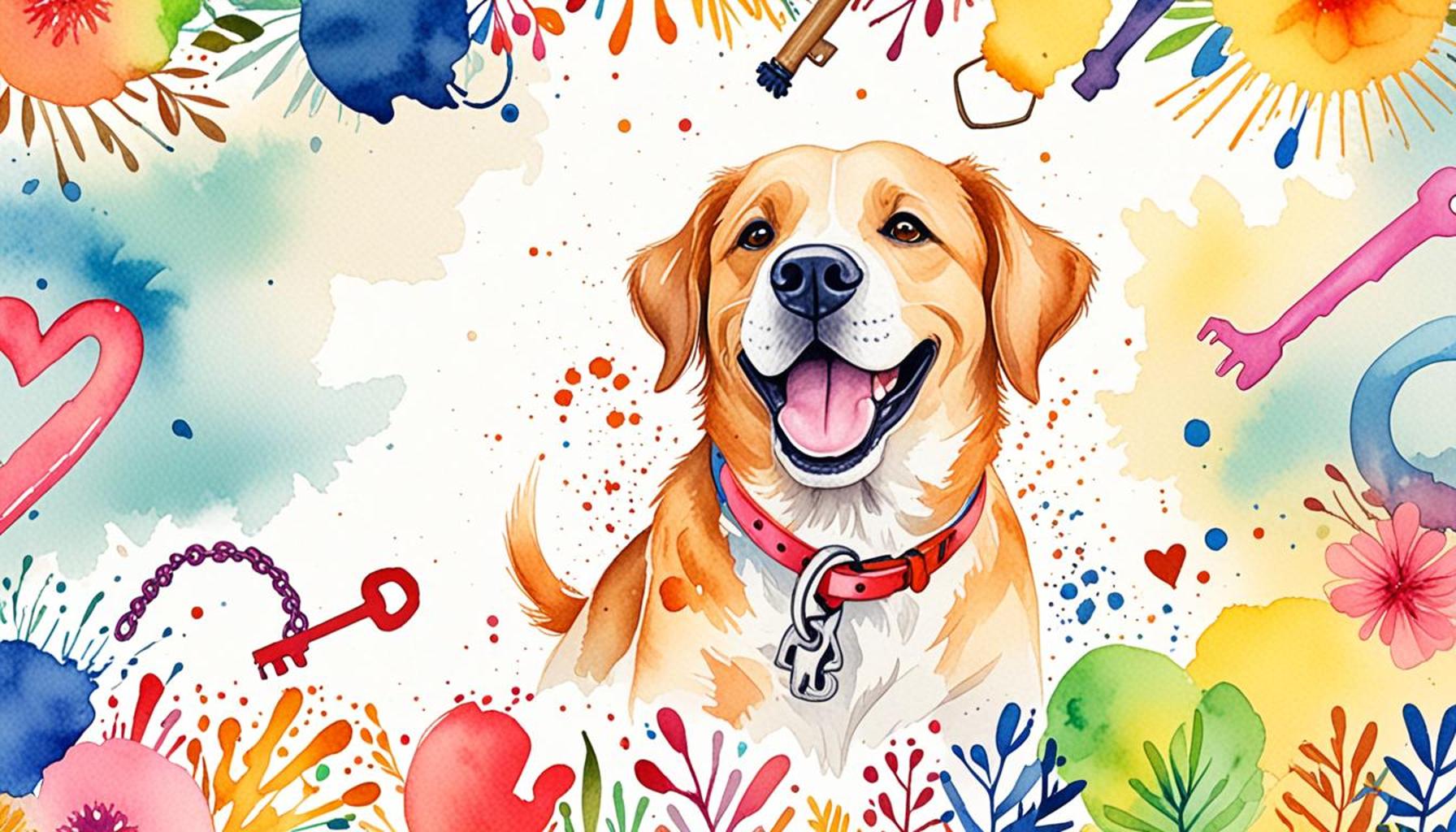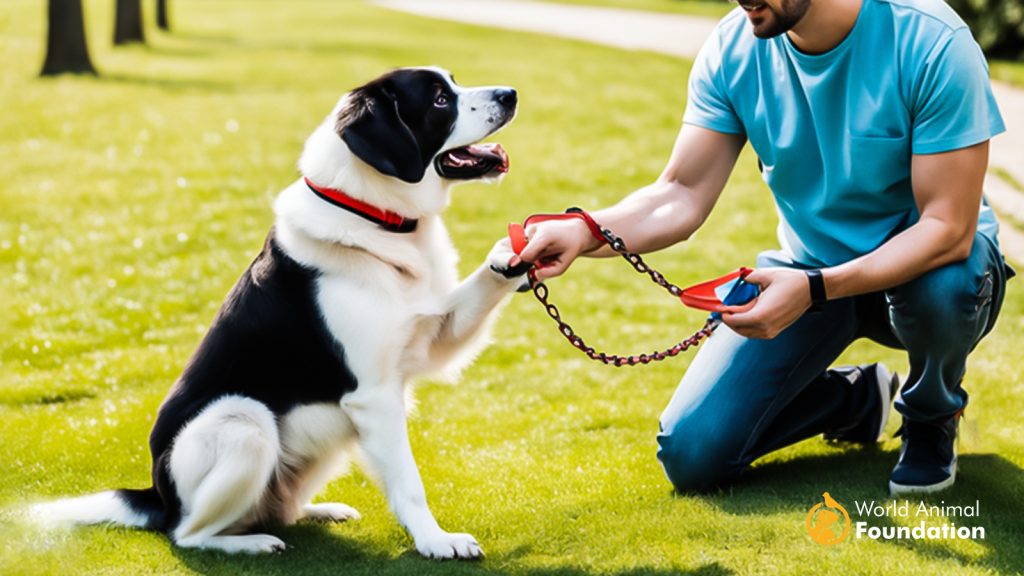Positive Reinforcement: The Key to Successful Dog Training

The Basics of Positive Reinforcement in Dog Training
Dog training can often feel overwhelming, but it’s essential to understand that this process can be both enjoyable and rewarding. Utilizing the principles of positive reinforcement enables dog owners not only to cultivate desired behaviors but also to strengthen the emotional bond they share with their pets. This approach is rooted in behavioral psychology, employing rewards to encourage specific actions, thus making them more likely to be repeated in the future.
Key Benefits of Positive Reinforcement
At its core, positive reinforcement involves the application of a desirable stimulus following a behavior, which leads to an increase in that behavior. Here are some crucial benefits of implementing this training method:
- Encourages desired behaviors: By rewarding your dog for sitting, staying, or coming when called, you’re teaching them that these behaviors yield positive outcomes, such as treats or affection.
- Builds trust and confidence: Using positive reinforcement fosters a trusting relationship with your dog. The more a dog associates training with positive experiences, the more confident they become in their abilities.
- Reduces stress for both dog and owner: Many training methods can lead to anxiety and frustration. Positive reinforcement creates a supportive environment, minimizing negative emotions and fostering a harmonious interaction.
Effective Forms of Rewards
When it comes to rewarding your dog for good behavior, there are numerous effective options to choose from. Here are some common rewards that can motivate your furry friend:
- Verbal praise: Enthusiastic words of encouragement, such as “good dog” or “well done,” can have a profound impact, especially when delivered with an excited tone.
- Treats: Small, tasty snacks can be a powerful incentive and can help reinforce the desired behavior during training sessions.
- Playtime or favorite toys: Incorporating play or allowing access to a beloved toy after a successful command reinforces the behaviors and offers joy.
This training methodology not only addresses obedience issues but also promotes your dog’s overall emotional health. Research has indicated that dogs raised in a positive reinforcement environment tend to show fewer behavioral problems, leading to happier, more balanced household dynamics. For instance, a study by the Journal of Veterinary Behavior found that dogs trained with positive reinforcement models exhibited less aggression and anxiety compared to those trained with aversive methods.
In upcoming sections, we will explore practical techniques that can help you seamlessly integrate positive reinforcement into your training regimen. Whether you are a first-time dog owner or someone looking to refresh your existing skills, there’s always potential for growth and a deeper understanding as we strive to create a joyful and effective learning atmosphere for our beloved pets.

DISCOVER MORE: Click here to learn how pets can boost conservation education for kids
Implementing Positive Reinforcement Techniques
Understanding the fundamentals of positive reinforcement is crucial for any dog owner looking to cultivate a well-behaved companion. To successfully implement this approach, it’s essential to recognize how to effectively communicate and bond with your dog during the training process. One of the most impactful methods is to establish a clear and consistent set of commands that your dog can learn to associate with positive outcomes. Let’s delve into practical techniques that can enhance your training sessions.
Establishing Clear Commands
The first step in positive reinforcement is ensuring that your canine companion understands the commands you are teaching. Simplifying your communication can significantly improve your dog’s responsiveness. Here are steps to create an effective command system:
- Be concise: Use one or two words for each command, such as “sit,” “stay,” or “come.” This simplicity helps prevent confusion.
- Use consistent cues: Pair verbal commands with visual cues or hand signals. For instance, a raised hand might signal “stay.” Consistency in commands and signals helps dogs learn and retain what they’ve been taught.
- Practice regularly: Short and frequent practice sessions, ideally 5 to 10 minutes each, can be more effective than longer sessions. Repetition in a low-stress environment reinforces your dog’s learning.
Timing is Everything
In positive reinforcement training, your timing can make all the difference. Immediate rewards after the desired behavior is crucial — this helps the dog make an association between the action and the reward. Delaying the reward may confuse the dog, leading to uncertainty about which behavior is being rewarded. A good practice is to reward your dog within seconds of them executing the command correctly. This prompt acknowledgment increases their understanding and encourages them to repeat the behavior.
Incorporating Variety to Keep Training Engaging
Monotony can lead to boredom for both you and your dog. To maintain interest and maximize learning, vary your rewards and training exercises. Here are some suggestions:
- Rotate rewards: While treats are an excellent motivator, mixing in verbal praise, playtime, or favorite toys keeps your dog guessing and engaged.
- Change locations: Conduct training sessions in different environments, like the backyard, park, or around the house, to help your dog generalize commands and respond well regardless of the setting.
- Increase complexity: Once your dog masters basic commands, gradually introduce more challenging tricks or commands to stimulate their mind.
By incorporating these techniques into your training regimen, you’re not only creating a more effective learning environment but also enriching the overall experience for your pet. As training progresses, the bond between you and your dog strengthens, laying the groundwork for a well-mannered and happy companion. In the following sections, we’ll explore how to troubleshoot common training challenges and further enhance your positive reinforcement strategy.
| Advantages | Description |
|---|---|
| Enhanced Learning | Using positive reinforcement encourages dogs to learn quickly, improving retention of commands and behaviors. |
| Strengthened Bond | Reward systems foster a stronger emotional connection between the dog and the owner, leading to a trusting and supportive relationship. |
| Reduced Behavioral Issues | This training approach effectively diminishes fear-based behaviors, making for a calmer and happier pet. |
| Motivational Success | Dogs respond eagerly to rewards, such as treats or praise, which helps keep them motivated during training sessions. |
In the world of dog training, positive reinforcement has emerged as a leading technique. Understanding the advantages outlined in the table can greatly benefit both the trainer and the pet. The key lies in recognizing that dogs, much like humans, thrive on encouragement and appreciation. By building on this principle, dog owners can expect a more joyful training experience and a better-behaved companion. Additional practices, such as consistent reward timing and the incorporation of varied incentives, can further enhance the effectiveness of this method. With the increasing popularity of positive reinforcement, many dog trainers are now prioritizing techniques that not only educate but also foster emotional well-being for dogs. Each training session has the potential to be a positive experience that strengthens the bond between dog and owner, paving the way for a lifetime of happiness and cooperation.
LEARN MORE: Click here to uncover the best training techniques
Overcoming Challenges in Positive Reinforcement Training
As much as we aspire for a smooth training experience, every dog owner may encounter hurdles along the way. Recognizing potential challenges and knowing how to address them can significantly enhance the efficacy of your positive reinforcement training efforts. Here, we explore common issues faced during dog training and provide solutions to keep both you and your dog motivated and successful.
Dealing with Distractions
One of the biggest challenges in dog training is managing distractions in the environment. Dogs are naturally curious creatures, and enticing sights, sounds, or smells can easily divert their attention away from training. To combat distractions:
- Choose the right environment: Begin training in a quiet, controlled space with minimal distractions, such as your home or a quiet backyard. As your dog becomes more confident and responsive, gradually introduce them to busier environments.
- Implement focus exercises: Teach your dog to focus on you during training sessions. Holding a treat in front of their nose and moving it to your side can help redirect their attention back to you, reinforcing the importance of concentration.
- Progressively increase difficulty: Once your dog excels in a distraction-free setting, add various distractions slowly. This gradual exposure helps your dog learn to maintain focus, adapting to an array of environments.
Understanding Your Dog’s Motivation
Every dog is unique, and understanding what motivates your furry friend can be pivotal for successful training. While some dogs may be food-driven, others may respond better to praise or play. Here’s how to identify and harness your dog’s specific motivators:
- Observe their responses: Pay attention to your dog’s reactions during training. Does your dog perk up when they see their favorite toy, or does a particular treat make them wag their tail excitedly? This observation will guide you in selecting the most effective reinforcement.
- Experiment with various rewards: If you notice your dog isn’t responding well to treats, try varying the rewards. Engaging in playtime with a favorite fetch toy or offering belly rubs can be just as effective for some dogs.
- Adjust based on progress: As your dog learns new commands or tricks, their motivation might evolve. Continually reassess what champions their enthusiasm to keep the training exciting.
Managing Setbacks with Patience
Even with the best strategies, it’s common to experience setbacks during the training process. Dogs can have off days, just like humans. Here’s how to navigate these moments effectively:
- Stay calm and patient: Frustration can translate to your dog, potentially disrupting their learning process. Maintain a calm demeanor, and practice patience as you navigate through tougher training days.
- Revisit previous commands: If your dog struggles with a specific command, go back to basics. Reinforcing previously mastered commands will boost their confidence and remind them of their capabilities.
- Maintain a positive outlook: Focus on your dog’s achievements rather than the setbacks. Celebrate small victories to bolster both your morale and your dog’s motivation to learn.
Ultimately, overcoming these challenges is part of the journey towards establishing a strong bond and a well-trained dog. By being aware of common obstacles in positive reinforcement training and employing effective strategies to manage them, you will not only enhance your training sessions but also build a deeper connection with your beloved pet. In the next sections, we will delve into how to set realistic goals for your training and the long-term benefits of staying committed to positive reinforcement methods.
DISCOVER MORE: Click here to learn about cat hunting behaviors
Conclusion
In the realm of dog training, positive reinforcement stands out as a vital pillar in fostering a harmonious relationship between humans and their canine companions. As explored throughout this article, employing techniques that revolve around rewards, recognition, and encouragement paves the way for not only effective training but also a joyful and engaging experience for both the owner and the dog. By understanding your dog’s unique motivations and the challenges that may arise, you can create a tailored training approach that optimizes learning outcomes.
Moreover, maintaining patience, celebrating small successes, and adapting your methods as your dog evolves will contribute significantly to cultivating a resilient and obedient pet. While challenges such as distractions and setbacks are an integral part of the training journey, they are also opportunities to deepen your bond with your dog. Embracing these moments with positivity allows you to build trust, ultimately leading to lasting behavioral changes.
As you continue to explore the world of dog training, remember that positive reinforcement is more than just a technique; it’s a philosophy that prioritizes kindness, respect, and understanding. The benefits of this approach reverberate through your dog’s behavior and your shared experiences, resulting in a loyal and well-adjusted companion. For anyone seeking a fulfilling partnership with their dog, adopting positive reinforcement training is undeniably the way forward. Dive deeper into this rewarding method, and witness the transformative impact it can have on delightful canine friendships.


